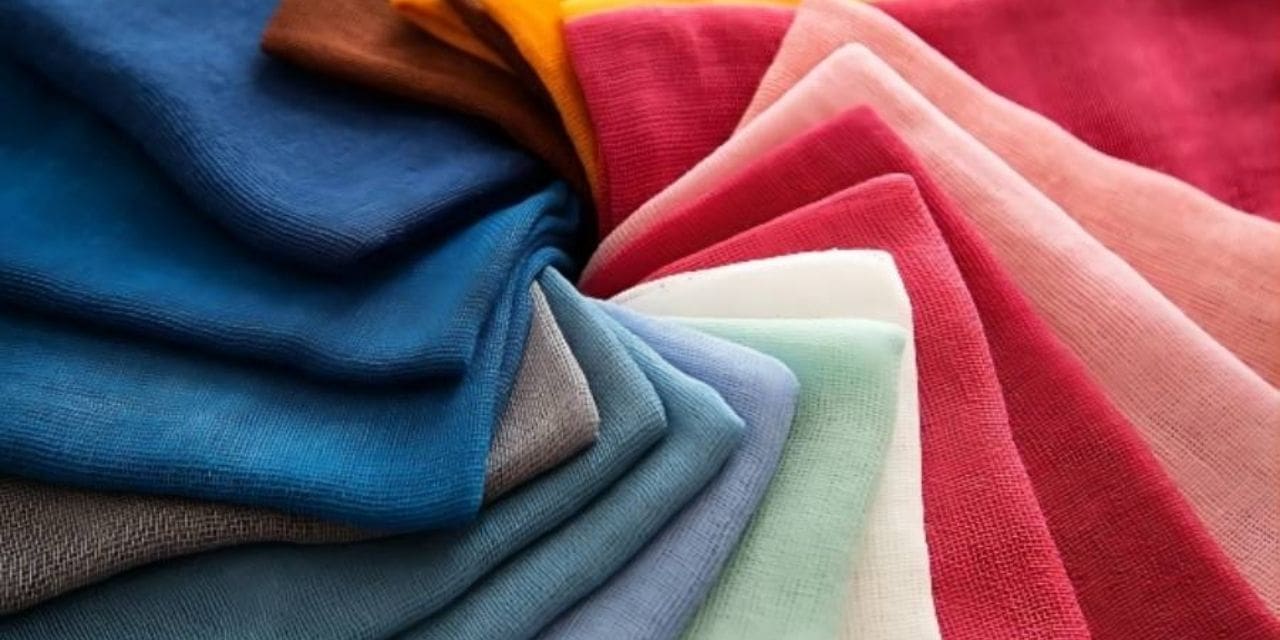
Sivaranjani
Sem 5, B Des (Textile Product Design)
Amity School of Fashion Technology
Amity University Mumbai
As consumers increasingly seek textiles that are not only functional and stylish but also low-maintenance and sustainable, the textile industry is turning to advanced technologies to meet these demands. Plasma technology, a groundbreaking innovation in the field, offers a sustainable solution for creating wrinkle-free and self-cleaning fabrics without the need for traditional, resource-intensive chemical processes. By altering fabric surfaces at the molecular level, plasma technology allows for the development of textiles that resist creasing and repel dirt and moisture, all while maintaining the material’s original softness and comfort. This article delves into the science behind plasma technology, the process by which it enables wrinkle-free and self-cleaning fabrics, the advantages it brings to the textile industry and consumers, and its future potential in reshaping sustainable fashion.
Introduction to Plasma Technology in Textiles
Plasma technology represents a major shift in how textiles are treated and finished. Traditional textile processing, particularly treatments that add functionalities such as water resistance, stain repellence, or wrinkle resistance, often involves water and chemical use that can be detrimental to the environment. Plasma technology, however, operates without these conventional resources, offering an eco-friendlier approach. In essence, plasma is an ionized gas comprising highly reactive particles, such as ions, electrons, and radicals, that interact with the surface of a material at the molecular level. When applied to textiles, this technology allows for specific surface modifications, enabling the fabric to acquire desired properties without altering its bulk structure. This innovation opens new possibilities in textile customization, enabling manufacturers to produce fabrics that meet modern expectations for functionality, environmental sustainability, and enhanced user convenience.
Understanding Wrinkle-Free and Self-Cleaning Fabrics
Wrinkle-free and self-cleaning properties have become highly desirable in the world of fashion and functional textiles, as they significantly reduce the effort required to maintain garments. Plasma technology enables these properties through precision surface treatments that create desired modifications without compromising the fabric’s inherent comfort. Wrinkle-free fabrics, for example, are engineered to resist creasing and maintain a smooth, freshly pressed appearance even after multiple washes or extended wear. Plasma treatments make this possible by enhancing the elasticity and flexibility of the fabric surface, which helps it resist deformation and return to its original state. Unlike traditional wrinkle-resistant treatments that often use harsh chemicals, plasma-treated fabrics retain their softness and breathability, making them ideal for applications that require comfort as much as durability.
Similarly, self-cleaning fabrics, which prevent dirt and stains from adhering to their surface, have gained traction across various sectors, including outdoor wear, healthcare, and hospitality. Plasma treatment creates hydrophobic (water-repelling) and oleophobic (oil-repelling) properties on the fabric’s surface, effectively preventing contaminants from binding to the fibres. This is achieved by generating a structured surface at the microscopic level that mimics the natural “lotus effect” seen in certain plants, where water and dirt simply roll off. Self-cleaning fabrics treated with plasma are particularly valuable in environments that require high standards of cleanliness and hygiene, reducing the need for frequent washing and making garment care more efficient.
Mechanism of Plasma Treatment for Wrinkle-Free and Self-Cleaning Properties
The process of plasma treatment involves exposing textiles to an environment of ionized gases, which can alter the surface characteristics of the fabric at a molecular scale. This treatment is conducted in controlled conditions to achieve specific results, such as wrinkle resistance or self-cleaning functionality, through two primary methods: cold plasma and atmospheric plasma. Cold plasma treatment operates at low temperatures, which is particularly beneficial for delicate textiles like cotton, silk, and synthetic fabrics that may degrade under high heat. This low-temperature treatment modifies the surface of the fabric without affecting its core structure, introducing functional groups that make the fabric more elastic and crease-resistant. As a result, fabrics treated with cold plasma resist wrinkling, retaining a smooth appearance that significantly reduces the need for ironing.
Atmospheric plasma treatment, on the other hand, is performed under regular air pressure, making it suitable for large-scale production. This process is particularly effective for imparting self-cleaning properties, as it allows for the application of hydrophobic or oleophobic molecules to the textile surface. In an atmospheric plasma treatment, the plasma helps these molecules bond with the fabric, forming a coating that resists both water and oil-based substances. This coating remains durable even after multiple washes, maintaining its effectiveness over time. By working at the surface level, plasma technology provides a precise and long-lasting finish that does not alter the feel of the fabric, allowing it to retain its softness and comfort.
Benefits of Plasma Treatment on Wrinkle-Free and Self-Cleaning Fabrics
The adoption of plasma technology for creating wrinkle-free and self-cleaning fabrics offers numerous benefits, particularly in terms of environmental sustainability, durability, and consumer convenience. One of the most significant advantages is the reduction of environmental impact. Traditional textile finishing processes are notorious for their high-water consumption and chemical waste, both of which contribute to water pollution and resource depletion. Plasma technology, in contrast, requires minimal water and significantly reduces or eliminates the need for chemicals, making it an eco-friendly alternative. By conserving water and reducing chemical usage, plasma treatments help the textile industry align with global efforts to reduce environmental harm, an essential consideration in today’s climate-conscious world.
From a consumer perspective, plasma-treated fabrics offer exceptional durability and comfort as the plasma process not only modifies the surface of the textile, but it also preserves the original texture and flexibility of the material. This ensures that wrinkle-free and self-cleaning fabrics remain soft, breathable, and comfortable to wear. Moreover, these properties are long-lasting, with plasma-treated fabrics retaining their functionality even after repeated washing. This durability not only enhances the product’s value for consumers but also promotes sustainable consumption by extending the garment’s lifespan. In addition, wrinkle-free fabrics also help consumers save time and energy by reducing the need for ironing, while self-cleaning fabrics require less frequent washing, further conserving water and energy.
Another critical benefit of self-cleaning fabrics, particularly in fields like healthcare and hospitality, is improved hygiene. The hydrophobic and oleophobic surfaces created through plasma treatments repel bacteria, dust, and other contaminants, reducing the risk of infection and contributing to a cleaner environment. This functionality is highly valued in uniforms and linens used in hospitals and hotels, where cleanliness is paramount. In outdoor and sports apparel, self-cleaning properties prevent stains and odours, allowing garments to stay fresh for longer periods and enhancing the user’s comfort in various settings.
Applications of Plasma-treated wrinkle-free and self-cleaning fabrics
Plasma-treated wrinkle-free and self-cleaning fabrics are being widely used across different industries due to their functional advantages. In the realm of professional attire and travel clothing, wrinkle-free fabrics have become increasingly popular for individuals who need to maintain a polished appearance with minimal maintenance. Plasma-treated shirts, pants, and suits allow professionals and frequent travellers to enjoy garments that stay smooth and presentable without the need for constant ironing. This convenience has made wrinkle-free fabrics a staple in workwear and business casual clothing.
In outdoor and sportswear, self-cleaning fabrics are particularly valuable. Plasma-treated jackets, pants, and athletic apparel resist stains and dirt, making them easy to maintain in demanding environments. For individuals who engage in activities like hiking, camping, or running, plasma-treated self-cleaning fabrics provide a solution that reduces the need for frequent washing, conserving resources and maintaining comfort. Similarly, in healthcare and hospitality settings, plasma-treated self-cleaning uniforms and linens help reduce bacterial growth, enhancing hygiene and reducing laundry costs. This functionality is especially critical in environments where sanitation is essential, contributing to healthier and more sustainable operational practices.
A notable case study that highlights the benefits of plasma technology in textiles involves the use of self-cleaning outdoor apparel designed for harsh environments. In settings where washing facilities are limited, such as remote expeditions or disaster response situations, self-cleaning clothing allows individuals to stay clean and comfortable for extended periods. Plasma-treated fabrics repel dirt and moisture, ensuring that garments remain fresh without the need for frequent washing. This application showcases the versatility and practicality of plasma-treated fabrics, demonstrating their potential to enhance functionality and convenience in challenging conditions.
Future Prospects of Plasma Technology in the Textile Industry
The future of plasma technology in textiles is promising, with numerous opportunities for further innovation and development. One exciting avenue is the integration of plasma technology with nanotechnology, which could amplify the functional benefits of wrinkle-free and self-cleaning fabrics. By embedding nanostructures within plasma-treated fabrics, manufacturers could enhance durability, provide UV protection, and even introduce self-healing properties. This integration has the potential to create “smart” textiles that adapt to various environmental conditions, offering advanced performance benefits for consumers.
Additionally, there is potential for plasma technology to be made accessible to consumers, allowing for customizable fabric treatments at home. Small-scale plasma devices could enable individuals to apply wrinkle-resistant and stain-repellent treatments to their garments, fostering sustainable consumption by extending the lifespan of clothing. Such devices would empower consumers to personalise and maintain their textiles, reducing the need for frequent replacements and promoting more thoughtful purchasing behaviour.
Research is also underway to develop biodegradable plasma treatments, which would ensure that the treated fabrics decompose naturally without leaving harmful residues in the environment. As the industry seeks to reduce its ecological footprint, biodegradable plasma treatments could offer a sustainable solution that addresses the environmental challenges associated with garment disposal. This approach could revolutionise the fast-fashion industry, allowing for the creation of garments that are both functional and environmentally responsible.
References:
- Wei, Q. et al. (2007) ‘Functionalization of textile materials by Plasma Enhanced Modification’, Journal of Industrial Textiles, 36(4), pp. 301–309. doi:10.1177/1528083707072375.
- Afroz, S. et al. (2021) (PDF) self-cleaning textiles: Structure, fabrication and applications, Self-cleaning textiles: structure, fabrication and applications. Available at: https://www.researchgate.net/publication/350418109_Selfcleaning_textiles_structure_fabrication_and_applications (Accessed: 05 November 2024). doi:10.1016/B978-0-12-821483-1.00016-4
- Bland, S. (2013) ‘Introducing materials today: Proceedings’, Materials Today, 16(12), p. 460. doi:10.1016/j.mattod.2013.11.006.
- Radetic1, M. et al. (2007) Environmental impact of plasma application to textiles, Journal of Physics: Conference Series. (Accessed: 05 November 2024).
- Zille, A. (2020) ‘Plasma Technology in fashion and textiles’, Sustainable Technologies for Fashion and Textiles, pp. 117–142. doi:10.1016/b978-0-08-102867-4.00006-2.

